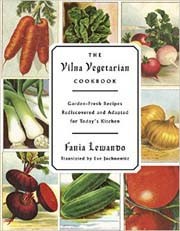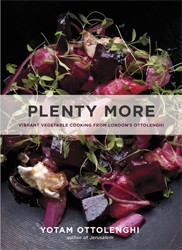Who would have thought that an entire cookbook could be devoted to one ingredient? Such is the case with Sesame: Global Recipes & Stories of an Ancient Seed. First-time cookbook author Rachel Simons has assembled more than eighty unique recipes using everything from toasted sesame seeds and sesame oil to the sesame paste tahini and the fudge-like candy halva (meaning “sweet” in Arabic). The book showcases many recipes from Simons herself, as well as the friends (including industry stalwarts such as Yotam Ottolenghi and Molly Yeh) she has made in her time as the co-owner of the Seed + Mill shop in New York City’s Chelsea Market.
The Seed + Mill brand, which Simons has run alongside business partners Lisa Mendelson and Monica Molenaar since 2016, sells tahini paste and halva in pastel-colored packages to nearly 2,000 stockists across the US and around the world. Sesame aims to go further, telling the story of the sesame seed’s “migration, survival and adaptation,” which is a kind of throughline for Simons, who brings her multicultural upbringing to the cookbook. Her Jewish ancestors were expelled from their homes during the Spanish inquisition and fled to Czechoslovakia; after surviving the Holocaust, they then left for Bulawayo, Zimbabwe. Simons herself grew up in Australia before later moving to New York as an adult.
The sesame seed also has a long history, dating back more than five thousand years to the Indian subcontinent, where it was one of the first oilseed crops. The plant can grow up to three feet tall, producing pods that can contain up to 100 seeds each. It simply needs a hot, dry climate to thrive. Despite the sesame seed’s status as a well-known ingredient, when opening Seed + Mill, Simons and her co-founders wondered if this food category was a bit niche — even in a city as multicultural as New York, signage remains to this day specifying the phonetic pronunciation of tahini.
But the cookbook is eminently approachable; it is divided into six sections — breakfast, seasonings and sauces, dips and snacks, salads and vegetables sides, mains, and desserts — and is full of tips, stories, and suggestions. The photography is beautiful, and all of the recipes feel simply designed and easy to execute; these range from the classic — variations on hummus, of course, and halva — to more unique fare such as carrot and tahini dip, made because it reminds Simons of the sweetened carrot dish tzimmes, which is traditionally served at Rosh Hashanah. The book also features classics of Jewish cuisine, such as sweet and salty challah, and honey cake, as well as international favorites such as ramen. Sesame is an excellent all-rounder, equally suitable for experienced home cooks as for adventurous souls looking to try something new.





